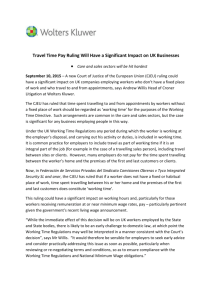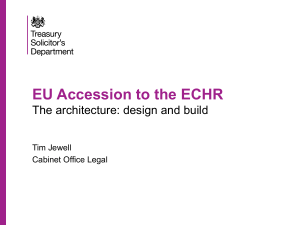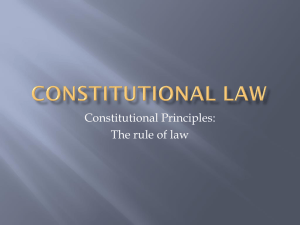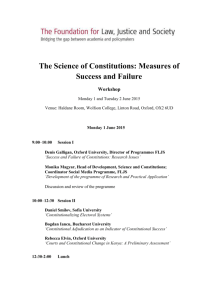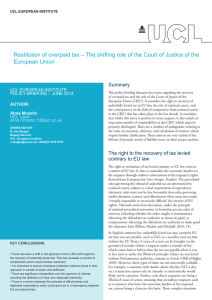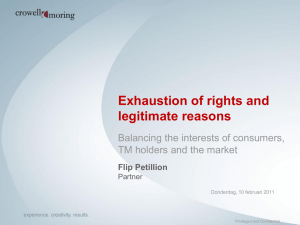Relationship Between EU Law and National Law
advertisement
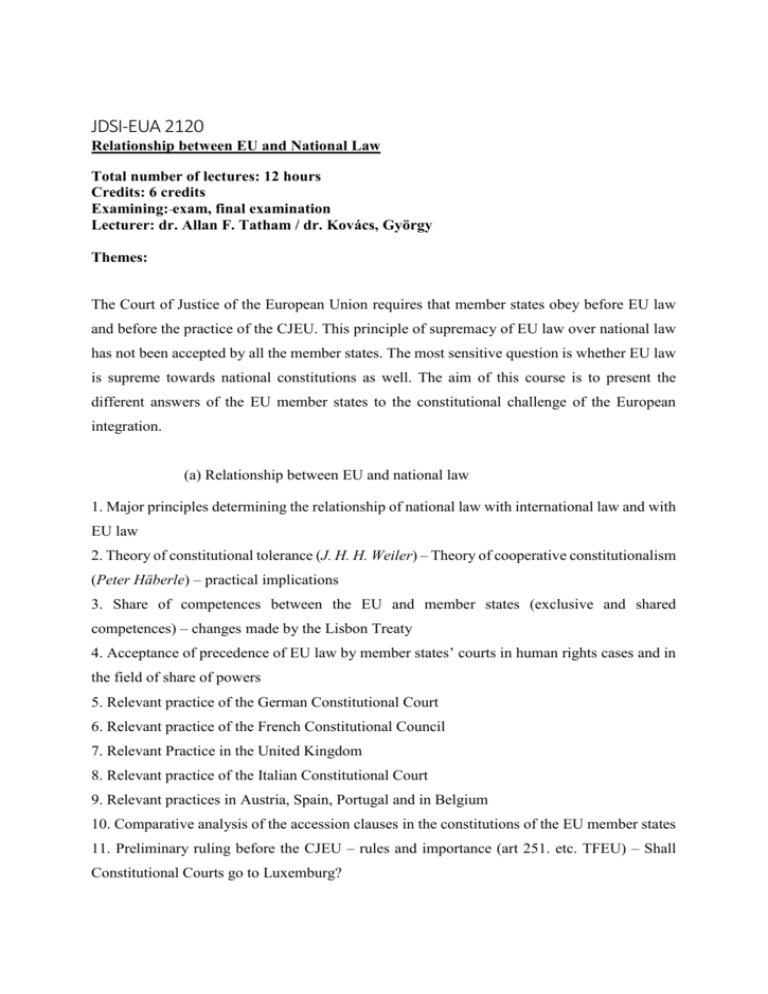
JDSI-EUA 2120 Relationship between EU and National Law Total number of lectures: 12 hours Credits: 6 credits Examining: exam, final examination Lecturer: dr. Allan F. Tatham / dr. Kovács, György Themes: The Court of Justice of the European Union requires that member states obey before EU law and before the practice of the CJEU. This principle of supremacy of EU law over national law has not been accepted by all the member states. The most sensitive question is whether EU law is supreme towards national constitutions as well. The aim of this course is to present the different answers of the EU member states to the constitutional challenge of the European integration. (a) Relationship between EU and national law 1. Major principles determining the relationship of national law with international law and with EU law 2. Theory of constitutional tolerance (J. H. H. Weiler) – Theory of cooperative constitutionalism (Peter Häberle) – practical implications 3. Share of competences between the EU and member states (exclusive and shared competences) – changes made by the Lisbon Treaty 4. Acceptance of precedence of EU law by member states’ courts in human rights cases and in the field of share of powers 5. Relevant practice of the German Constitutional Court 6. Relevant practice of the French Constitutional Council 7. Relevant Practice in the United Kingdom 8. Relevant practice of the Italian Constitutional Court 9. Relevant practices in Austria, Spain, Portugal and in Belgium 10. Comparative analysis of the accession clauses in the constitutions of the EU member states 11. Preliminary ruling before the CJEU – rules and importance (art 251. etc. TFEU) – Shall Constitutional Courts go to Luxemburg? (b) Remedies for breach of EU law (Craig & de Búrca, chapter: 5) 1. Requirements established by the Court of Justice of the European Union: equivalence, effectiveness, national procedural rules 2. Remedies – restitution, damages, judicial review, interim relief Required reading: References: Craig & de Búrca, EU Law: Text, Cases and Materials, Oxford University Press, Oxford (2011 ed.) Ch 4-6. Additional materials to be provided: Steiner & Woods, Textbook on EC Law, 8th ed., Oxford University Press (2003); Hartley, Foundations of European Community Law, most recent edition, Oxford University Press. J.H.H Weiler: EU Law Teaching Materials Ch II-VI. (available: http://centers.law.nyu.edu/jeanmonnet/courses/eu/materials.html) Treaty on European Union – with amendments of the Croatian accession (relevant parts) Treaty on the Functioning of the European Union – with amendments of the Croatian accession (relevant parts) Questions: EXAM IN RELATIONSHIP HARMONISATION OF NATIONAL LAW AND EU LAW, AND 1. Is it the case that “the doctrine of supremacy of EU law is a logical if not a necessary inference from Community Treaties?” Explain by references to ECJ case law. 2. The CJEU spent the first decades of its existence creating a Constitution for the Community/Union. Explain with reference to the development of its principles. 3. How should conflicts between EU law and national law be resolved according to the Court of Justice? Explain by reference to CJEU case-law. 4. Do French courts accept that EU law is supreme over the Constitution. Explain with case references. 5. Comment on the view that the biggest obstacle to accepting the supremacy of EU law in the United Kingdom was and is the doctrine of parliamentary sovereignty. 6. How did the 1972 European Communities Act assist in the recognition of primacy of EU law in the United Kingdom? Has there been a retreat from this acceptance? 7. The greater protection of human rights in the German Constitution has effectively denied supremacy to EU law. Explain by reference to German court cases. 8. German courts more readily accepted direct effect than supremacy of EC law. Explain by reference to cases from the German courts. Explain the importance of the Honeywell decision of the German Constitutional Court! 9. With respect to remedies in national courts for breach of EU law, the CJEU has developed certain principles. Explain, with reference to cases. 10. In the field of remedies, what is meant by the phrase “national procedural autonomy”? 11. Decisions of the CJEU changed the provision of remedies in the Member States. Discuss this statement with reference to the facts and implications of two CJEU decisions. 12. The rulings of the CJEU in Francovich and Brasserie de Pêcheur are some of the most important decisions ever delivered. Discuss. 13. Explain the importance of the Factortame case story from the point of view of British law, in respect of both interim relief and state liability. 14. Explain the differences in effect between “total harmonisation” and “minimum harmonisation,” referring to EU sources to provide examples. 15. What are the different legal bases (Treaty Articles) for harmonisation? Discuss by highlighting the differences between them, especially as to when they may be used. November 2014
